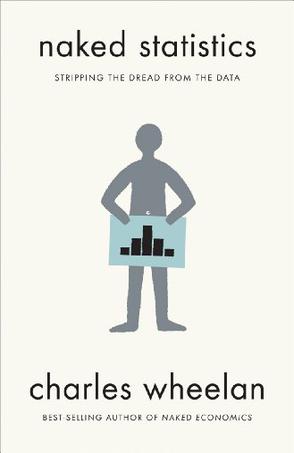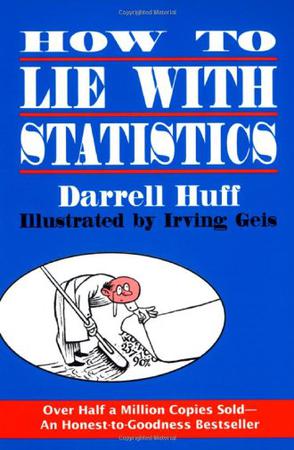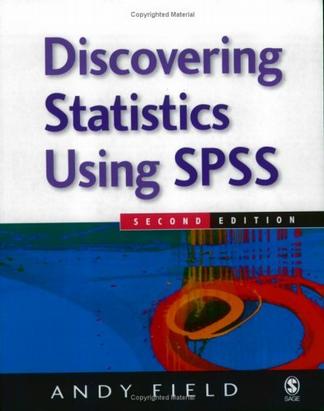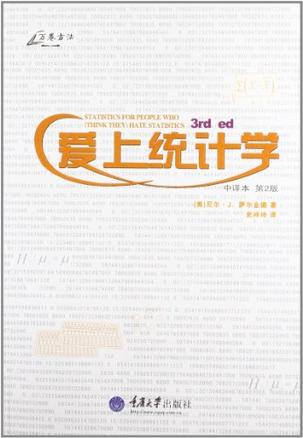-

Naked Statistics
The field of statistics is rapidly transforming into a discipline that Hal Varian at Google has called "sexy". And with good reason - from batting averages and political polls to game shows and medical research - the real-world application of statistics is growing by leaps and bounds. In Naked Statistics, Charles Wheelan strips away the arcane and technical details to get at the underlying intuition that is key to understanding the power of statistical concepts. Tackling a wide-ranging set of problems, he demonstrates how statistics can be used to look at questions that are important and relevant to us today. With the trademark wit, accessibility and fun that made Naked Economics a bestseller, Wheelan brings another essential discipline to life with a one-in-a-million statistics book that you will read for pleasure. -

How to Lie With Statistics
"There is terror in numbers," writes Darrell Huff in How to Lie with Statistics. And nowhere does this terror translate to blind acceptance of authority more than in the slippery world of averages, correlations, graphs, and trends. Huff sought to break through "the daze that follows the collision of statistics with the human mind" with this slim volume, first published in 1954. The book remains relevant as a wake-up call for people unaccustomed to examining the endless flow of numbers pouring from Wall Street, Madison Avenue, and everywhere else someone has an axe to grind, a point to prove, or a product to sell. "The secret language of statistics, so appealing in a fact-minded culture, is employed to sensationalize, inflate, confuse, and oversimplify," warns Huff. Although many of the examples used in the book are charmingly dated, the cautions are timeless. Statistics are rife with opportunities for misuse, from "gee-whiz graphs" that add nonexistent drama to trends, to "results" detached from their method and meaning, to statistics' ultimate bugaboo--faulty cause-and-effect reasoning. Huff's tone is tolerant and amused, but no-nonsense. Like a lecturing father, he expects you to learn something useful from the book, and start applying it every day. Never be a sucker again, he cries! Even if you can't find a source of demonstrable bias, allow yourself some degree of skepticism about the results as long as there is a possibility of bias somewhere. There always is. Read How to Lie with Statistics. Whether you encounter statistics at work, at school, or in advertising, you'll remember its simple lessons. Don't be terrorized by numbers, Huff implores. "The fact is that, despite its mathematical base, statistics is as much an art as it is a science." --Therese Littleton -

Discovering Statistics Using SPSS
This new edition of Field's bestselling textbook provides students of statistical methods with everything they need to understand, use and report statistics - at every level. Written in Andy Field's vivid and entertaining style, and furnished with playful examples from everyday student life (among other places), the book forms an accessible gateway into the often intimidating world of statistics and a unique opportunity for students to ground their knowledge of statistics through the use of SPSS. The text is fully compliant with the latest release of SPSS (version 13). -

Applied Multiple Regression/Correlation Analysis for the Behavioral Sciences, 3rd Edition
This classic text on multiple regression is noted for its nonmathematical, applied, and data-analytic approach. Readers profit from its verbal-conceptual exposition and frequent use of examples. The applied emphasis provides clear illustrations of the principles and provides worked examples of the types of applications that are possible. Researchers learn how to specify regression models that directly address their research questions. An overview of the fundamental ideas of multiple regression and a review of bivariate correlation and regression and other elementary statistical concepts provide a strong foundation for understanding the rest of the text. The third edition features an increased emphasis on graphics and the use of confidence intervals and effect size measures, and an accompanying website with data for most of the numerical examples along with the computer code for SPSS, SAS, and SYSTAT, at www.psypress.com/9780805822236 . Applied Multiple Regression serves as both a textbook for graduate students and as a reference tool for researchers in psychology, education, health sciences, communications, business, sociology, political science, anthropology, and economics. An introductory knowledge of statistics is required. Self-standing chapters minimize the need for researchers to refer to previous chapters. -

Statistics for the Behavioral Sciences
This best-selling introductory statistics text is designed for courses in psychological and educational statistics and is written in an intuitive, explanatory style. New to this edition: In the Literature sections help students learn how to report statistics and results; as well as learn how to read and interpret scientific journals. The Minitab chapter has been removed; it is now a separate supplement for those who wish to cover it. -

爱上统计学
在经过不断地摸索以及少量成功大量失败的尝试之后,我已经学会了以某种方式教授统计学,我和我的许多学生认为这种方式不会让人感到害怕,同时能够传递大量的信息。 通过这本书可以了解基础统计学的范围并学习所有应该掌握的信息,也可以了解整理和分析数据的基本思路和最常用的技术。本书理论部分有一些,但是很少,数学证明或特定数学程式的合理性讨论也很少。 为什么《爱上统计学》这本书不增加更多理论内容?很简单,初学者不需要。这并不是我认为理论不重要,而是在学习的这个阶段,我想提供的是我认为通过一定程度的努力可以理解和掌握的资料,同时又不会让你感到害怕而放弃将来选修更多的课程。我和其他老师都希望你能成功。 因此,如果你想详细了解方差分析中F值的含义,可以从Sage出版社查找其他的好书(我愿意向你推荐书目)。但是如果你想了解统计学为什么以及如何为你所用,这本书很合适。这本书能帮助你理解在专业文章中看到的资料,解释许多统计分析结果的意义,并且能教你运用基本的统计过程。 --- 第I部分 耶!我喜欢统计学 1 统计学还是虐待学?由你决定 为什么学习统计学 统计学简史 统计学:是什么(或不是什么) 我在统计学课堂上做什么 使用这本书的十种方式(同时也在学统计学!) 关于那些符号 难度指数 第Ⅱ部分 西格玛·弗洛伊德和描述统计 2 必须完成的功课——计算和理解平均数 计算均值 需要记忆的内容 计算中位数 需要记忆的内容 计算众数 何时用什么 应用计算机并计算描述统计值 3 性别差异——理解变异性 为什么理解变异性很重要 计算极差 计算标准差 需要记忆的内容 计算方差 使用计算机计算变异性量数 4 一幅图真的相当于千言万语 为什么要用图表说明数据 好图表的十个方面(少贪新,多练习) 首先是建立频数分布 图形密度:建立直方图 扁平和细长的频数分布 其他的图表数据的绝妙方法 使用计算机图示数据 5 冰淇淋和犯罪——计算相关系数 相关系数到底是什么 需要记忆的内容 计算简单相关系数 理解相关系数的含义 决定性的努力:相关系数平方 其他重要的相关 使用计算机计算相关系数 第Ⅲ部分 抓住那些有趣又有利的机会 6 你和假设:检验你的问题 也许你想成为一个科学家 零假设 研究假设 好假设的标准是什么 7 你的曲线是正态的吗——概率和概率的重要性 为什么学习概率 正态曲线(或钟型曲线) 我们最中意的标准值:z值 使用计算机计算z值 第Ⅳ部分 显著性差异——使用推论统计 8 显著性的显著——对你我来说意味着什么 显著性的概念 显著性与意义 推论统计介绍 显著性检验介绍 9 两个群体的t检验——不同群体的均值检验 独立样本t检验介绍 计算检验统计量 特殊效果:差异是真实的吗 使用计算机进行t检验 10 两个群体的t检验——两个相关群体的均值检验 …… 第V部分 你得了解和记忆的内容 附录A 30分钟SPSS教学 附录B 数据表 附录C 数据集